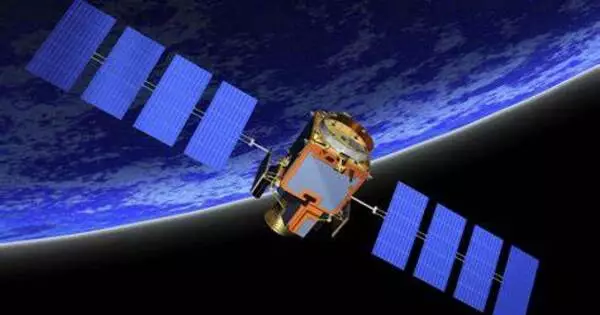Improving the efficiency of lightweight solar cells for space-based applications is critical for space exploration and satellite technological advancement. When it comes to producing energy for space exploration and colonization, readily accessible silicon or gallium arsenide solar cells are still too heavy to be delivered by rocket.
To solve this issue, a wide range of lightweight alternatives are being investigated, including solar cells composed of a thin layer of molybdenum selenide, which fall under the wider category of 2D transition metal dichalcogenide (2D TMDC) solar cells. Researchers suggest a device design in the inaugural edition of the journal Device that can increase the efficiency of 2D TMDC devices from 5% to 12%, as previously demonstrated.
“I believe that people are gradually realizing that 2D TMDCs are excellent photovoltaic materials, but not for terrestrial applications, but for mobile – more flexible, like space-based applications,” says lead author and Device advisory board member Deep Jariwala of the University of Pennsylvania. “Because 2D TMDC solar cells weigh 100 times less than silicon or gallium arsenide solar cells, these cells suddenly become a very appealing technology.”
The unique part about this device is its superlattice structure, which essentially means there are alternating layers of 2D TMDC separated by a spacer or non-semiconductor layer. Spacing out the layers allows you to bounce light many, many times within the cell structure, even when the cell structure is extremely thin.
Deep Jariwala
While 2D TMDC solar cells are less effective than silicon solar cells in terms of efficiency, they produce more electricity per weight, a feature known as “specific power.” This is due to the fact that a layer only 3-5 nanometers thick – or over a thousand times thinner than a human hair – absorbs sunlight at a rate equivalent to commercially available solar cells. Because they are only a few atoms thick, their extreme thinness earns them the name “2D” – they are termed “flat” because they are only a few atoms thick.
“High specific power is one of the most important goals of any space-based light harvesting or energy harvesting technology,” Jariwala explains. “This is critical not only for satellites or space stations, but also for real utility-scaled solar power in space.” The amount of solar cells that would have to be shipped up is so huge that no spacecraft can now get those materials up there in an economically viable manner. So, the true solution is to double up on lesser weight cells, which provide far more specific power.”
The full potential of 2D TMDC solar cells has not yet been fully realized, so Jariwala and his team have sought to raise the efficiency of the cells even further. Typically, the performance of this type of solar cell is optimized through the fabrication of a series of test devices, but Jariwala’s team believes it is important to do so through modeling it computationally.
Additionally, the team thinks that to truly push the limits of efficiency, it is essential to properly account for one of the device’s defining – and challenging to model – features: excitons.

Excitons are formed when a solar cell absorbs sunlight, and their predominance is responsible for the high solar absorption of a 2D TMDC solar cell. The solar cell generates electricity by channeling the positively and negatively charged components of an exciton to different electrodes.
By simulating the solar cells in this manner, the team was able to create a design with twice the efficiency of what had previously been achieved experimentally.
“The unique part about this device is its superlattice structure, which essentially means there are alternating layers of 2D TMDC separated by a spacer or non-semiconductor layer,” says Jariwala. “Spacing out the layers allows you to bounce light many, many times within the cell structure, even when the cell structure is extremely thin.”
“We were surprised to see a 12% value in such thin cells.” Given that present efficiencies are less than 5%, my aim is that in the next 4 to 5 years, people will be able to demonstrate cells with efficiencies of 10% and more.”
The next stage, according to Jariwala, is to consider how to achieve large-scale, wafer-scale production for the proposed design. “Right now, we’re putting these superlattices together by stacking individual elements like sheets of paper. “It’s as if you’re tearing them out of one book and sticking them together like a stack of sticky notes,” Jariwala explains. “We need to find a way to grow these materials directly on top of one another.”














